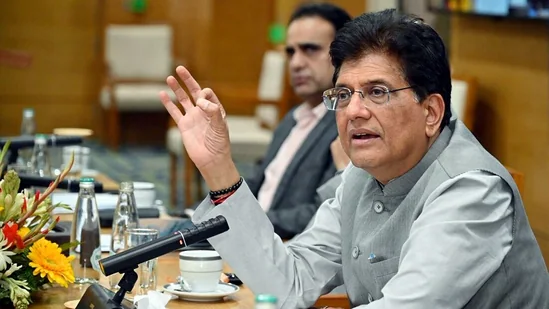India’s “One Nation, One Election” Vision: Set for a 2034 Reality?
- MGMMTeam

- Jun 10
- 4 min read
In an ambitious move to reform India’s electoral process, the government is working toward implementing the concept of One Nation, One Election (ONOE) — a synchronized polling system for the Lok Sabha and State Legislative Assemblies, and eventually local bodies. While the proposal has generated extensive debate, official developments in 2024 have brought it closer to becoming a reality — but not before 2034.

The year 2034 has now been projected as the earliest possible timeline for India’s first fully unified election cycle, as per government sources and parliamentary committee deliberations. This transformation would require substantial constitutional changes, political consensus, and logistical overhaul across India’s vast electoral landscape.
Legislative Backdrop and Constitutional Amendments
The key to enabling simultaneous elections lies in the passage of the Constitution (129th Amendment) Bill, 2024, alongside the Union Territories (Amendment) Bill. These bills collectively aim to empower the President of India to announce an “appointed date” during the first sitting of a newly elected Lok Sabha — from which all future election cycles would be synchronized.
This legislative framework proposes that all state assembly elections after the appointed date would be aligned with the Lok Sabha's five-year term. Any state elections conducted between 2029 and 2034 would involve shortened tenures to ensure full alignment by 2034. For example, a state that holds assembly elections in 2032 may only serve a two-year term, ending in 2034 to match the national electoral schedule.
Why 2034 Is the Earliest Feasible Date
Though the amendment bills were introduced in December 2024, PP Chaudhary, BJP MP and chairperson of the Joint Parliamentary Committee (JPC), has clarified that the earliest viable implementation would be the 2034 election cycle. The 2024–2029 Lok Sabha term is already underway, and the constitutional process mandates that the alignment can only begin with the term following the next general election in 2029.
Once the new Lok Sabha is in place, the President can declare the “appointed date,” triggering a cycle where state elections are gradually synchronized. The time between 2029 and 2034 will therefore serve as a transitional phase, during which out-of-sync state assemblies will gradually adjust their schedules by holding elections for shorter terms.
The Role of the Joint Parliamentary Committee
The JPC on Simultaneous Elections plays a pivotal role in building consensus and finalizing the details of the proposal. The 39-member committee has already begun its nationwide consultations, having visited states such as Uttarakhand and Maharashtra. Its scope includes gathering public feedback, consulting state governments, and examining international electoral practices.
The committee is also exploring legislative safeguards — including a “constructive vote of no confidence” provision — to ensure stability. Such a clause, similar to Germany’s model, would require a government to propose an alternative leadership before passing a no-confidence vote, minimizing premature dissolutions and maintaining synchronized terms.
Promised Benefits of Simultaneous Elections
Proponents argue that ONOE offers both practical and democratic advantages. Financially, the move could reduce the cost of conducting elections by up to 30–35%, according to estimates shared by state leaders such as Uttarakhand Chief Minister Pushkar Singh Dhami. Currently, staggered elections require repeated mobilization of election personnel, security forces, and logistical infrastructure, leading to significant expenses.
From a governance perspective, continuous imposition of the Model Code of Conduct (MCC) during election cycles disrupts policy implementation. A unified electoral calendar would minimize such disruptions, allowing governments to plan and execute long-term development projects without pause.
The proposal also holds promise for increasing voter participation. Observations from past state and national election overlaps suggest that simultaneous polls often lead to higher turnout, as citizens are more likely to engage when casting multiple votes in a single visit to the polling booth.
Concerns and Opposition
Despite the potential benefits, the ONOE proposal has sparked concern among opposition parties and constitutional scholars. A primary criticism revolves around the erosion of federalism. Critics argue that bundling all elections could overshadow state-specific issues, pushing national narratives to the forefront and weakening the representation of regional concerns.
Operationally, the implementation poses a massive logistical challenge for the Election Commission of India. Conducting elections for more than 1 billion voters across multiple tiers of governance within a single window would require unprecedented coordination, resources, and security arrangements.
There are also democratic concerns about what happens if a state government falls prematurely due to a vote of no confidence. While the idea of a “constructive vote” might offer a buffer, constitutional experts warn that such changes would require cautious deliberation and transparent safeguards to avoid democratic backsliding.
Looking Ahead: The Path to 2034
The roadmap to ONOE remains ambitious, with several key steps pending. The constitutional amendment needs to secure a two-thirds majority in both houses of Parliament and be ratified by at least half of the state legislatures. Meanwhile, the JPC continues to gather stakeholder feedback and refine the proposal for broader acceptance.
If the current Lok Sabha completes its term in 2029 and the amendment is passed before then, the “appointed date” could be declared shortly after the 2029 elections. From there, state elections held between 2029 and 2034 would gradually be adjusted to align with the national cycle. The 2034 general election would thus mark the first instance of a truly unified electoral event in independent India’s history.
Conclusion
The dream of holding One Nation, One Election is no longer theoretical — it is a tangible legislative and political mission targeting 2034 as the starting point. While the government projects it as a transformative reform for India’s democracy, it remains a topic of intense debate.
Balancing the efficiency and cost-savings of synchronized elections with the foundational principles of federalism and democratic diversity will be the real test. As the Joint Parliamentary Committee continues its consultations and deliberations, the coming years will determine whether India can pioneer this ambitious electoral reform while upholding its democratic ethos.
(Sources: Firstpost, India Today, Times of India)




Comments